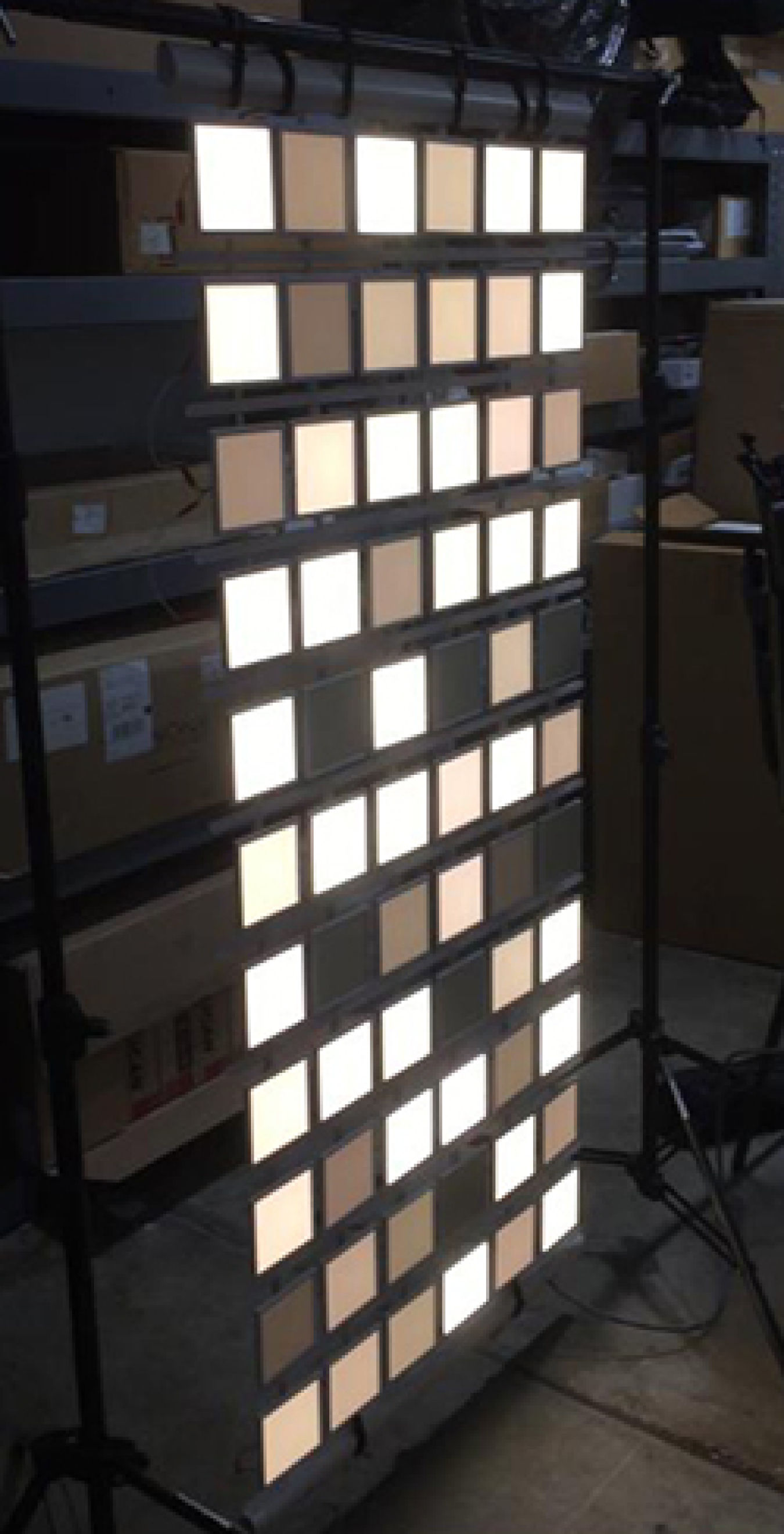
A combination of factors – including the voltage limit on a UL Class 2 luminaire and the fact that OLED panel voltage is typically greater than LED voltage – have limited the options for driver and panel configuration in an OLED luminaire, when using a “traditional” architecture (i.e., a single/multi-channel driver powering a number of OLED panels connected in series/parallel). With the help of DOE funding, Acuity Brands Lighting addressed these issues by developing an OLED luminaire that features DC/DC drivers integrated with each panel, and a base station that provides low-voltage DC power and that translates user-control input to the desired dimming of the panels.
The key advancement made by the Acuity team was to develop a distributed driver system with a power line communication (PLC) protocol that superimposes a digital signal onto a two-wire low-voltage bus, and that enables individual addressing of each OLED panel. Data rates of up to 500 kb/s were achieved, suitable for lighting control protocols such as DMX and DALI. A full-size, 66-panel Acuity Canvis™ was used as the platform for demonstrating the system architecture. The demo unit employed high-efficacy commercial OLED panels from LG Display, with panel efficacies up to 86 (± 10) lm/W. The luminaire system efficacy of 49.3 lm/W with a panel driver integrated into each OLED panel was lower than targeted due to the standby power consumption in the panel driver. It’s believed that by optimizing the microprocessor in the panel driver, additional power savings can be achieved.
Alternative OLED panels were provided by subcontractor OLEDWorks, which fabricated new designs of 3000K, 4"-square panels for this project. By the project’s end, the OLEDWorks panels achieved an average efficacy of 65 lm/W and a maximum efficacy of 74 lm/W. Additional improvements, such as reducing the panel voltage by 15%, could have significantly increased panel efficacy, but there was insufficient time to implement those improvements for this project. Acuity was able to demonstrate using both LG Display and OLEDWorks panels in the same luminaire by optimizing the panel driver for the specific panel while keeping the communication protocol and hardware the same. Thus the distributed driver system is shown to be able to accommodate multiple panel vendors, making it future-compatible.
Acuity is evaluating plans to produce OLED luminaires based on the new architecture, which is expected to provide greater flexibility in OLED luminaire design, save luminaire assembly time, and enable faster product development. The distributed architecture will also be applicable to LED luminaires. (April 2017)
Return to Research Highlights.

